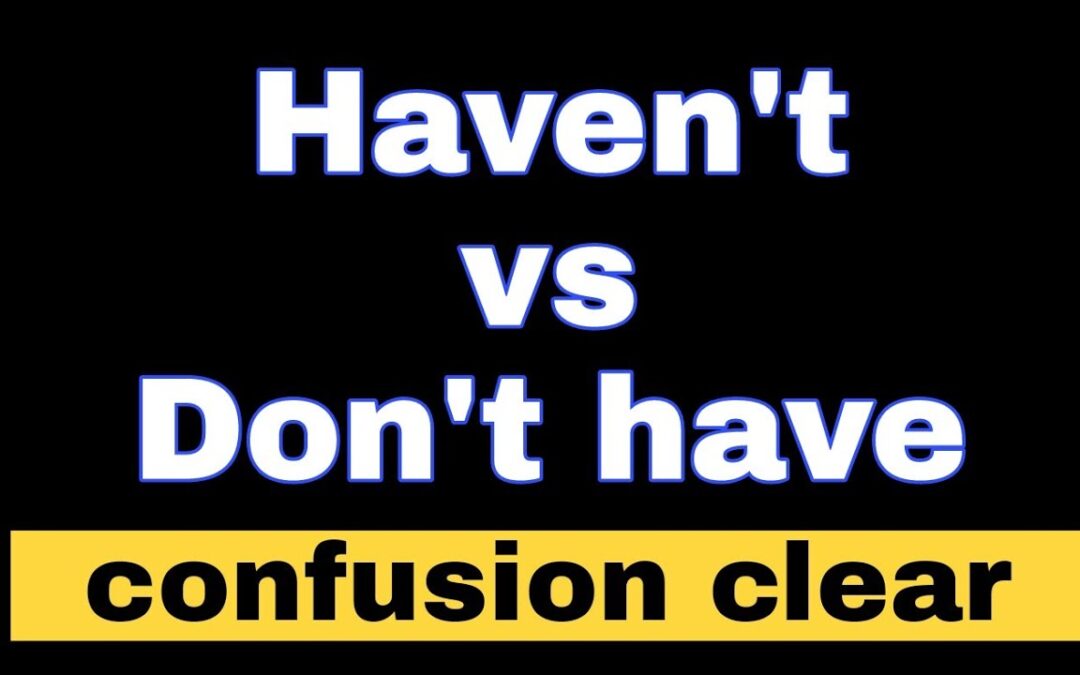In a recent lesson, one of my students said ‘I haven’t the time’. When I corrected her by saying ‘I don’t have the time’, she was unsure as to why this would be the case and why we need the auxiliary verb ‘to do’. After all, we don’t say ‘ I do not be tired’, ‘they did not be funny’, or ‘does she be young’? We say ‘I am not tired’, ‘they weren’t funny’, and ‘was she young’? So, why can’t we say ‘I have not the time’?
Well, the verb to be is special—it doesn’t need the verb do to form negatives or questions in the simple tenses. For example:
- I am not a student. ✅ (No do needed.)
- Were you a teacher? ✅ (Again, no do required.)
Because of this, many learners mistakenly think to have is also an exception. But this is not the case! To have is just like most other verbs. It needs do to form negatives and questions:
- I don’t have a car. ✅
- Did you have a car? ✅
Remember: to be is unique, but to have follows the normal rules.
The verb to have is one of the most common and useful verbs in English. It’s everywhere—helping us talk about actions, possessions, and more. But it also has its own special rules, and these can sometimes confuse learners. Don’t worry! This short guide will explain how to have behaves and give you some easy tips.
When To Have Works as a Helper
When to have is used as a helper (or auxiliary) verb, it joins with another verb to form perfect tenses, like I have eaten or She has arrived. In this role, to have is happy to take a short form (called a contraction). For example:
- He’s eaten his lunch (He has eaten his lunch).
- She’s arrived at the station (She has arrived at the station).
Here, the contraction is normal and sounds natural. English speakers use these contractions all the time.
When To Have Stands Alone
When to have is used to show possession (to mean “own” or “possess”), it becomes less flexible. In this case, people usually don’t contract it:
- They have a car. ✅
- They’ve a car. ❌ (This sounds unusual in modern English.)
- He has a cat. ✅
- He’s a cat. ❌ (This sounds like he is a cat!)
When to have is the main verb and means possession, it prefers to stay in its full form. Using a contraction can sound confusing or strange.
Negatives and Questions
Things get even stricter when to have is used in negative or question sentences. Unlike its helper role, main verb to have needs a little extra support here. In modern English, it uses the verb do to help:
- I don’t have a car. ✅
- She doesn’t have any money. ✅
- He hasn’t a car. ❌ (Not common in modern English.)
For questions, the rule is the same:
- Do you have a car? ✅
- Has he a car? ❌ (This is rarely used in modern English.)
So, remember: when you’re talking about possession in negatives or questions, to have needs do.
Exceptions in Some Dialects
In some English dialects, especially in the UK, people might say:
- He hasn’t a clue.
- They’ve no money.
These forms are not incorrect, but they are less common in everyday English. If you’re learning English as a second language, it’s safer to stick to do in negative and question sentences.
Tips for Using To Have
- Use contractions like he’s or they’ve only when to have is helping another verb (e.g., He’s finished his work).
- Avoid contractions when to have means possession (e.g., I have a dog, not I’ve a dog).
- Use do to make negatives and questions when to have means possession:
- Negative: I don’t have a car.
- Question: Do you have a car?
Why It Matters
The verb to have may seem a little fussy, but once you know its rules, it’s easy to use. When it’s a helper verb, it loves to be shortened. When it talks about possession, it likes to keep things clear and full. And for negatives and questions, it happily shares the work with do.
So, take your time, practice the patterns, and soon you’ll have no trouble with to have!
If you have enjoyed reading this blog, please ‘like’ it and share it with your friends and colleagues, and if you know anyone who might be interested in my online one-to-one lessons, please do ask them to contact me to discuss how I can help them to excel in English.


Recent Comments